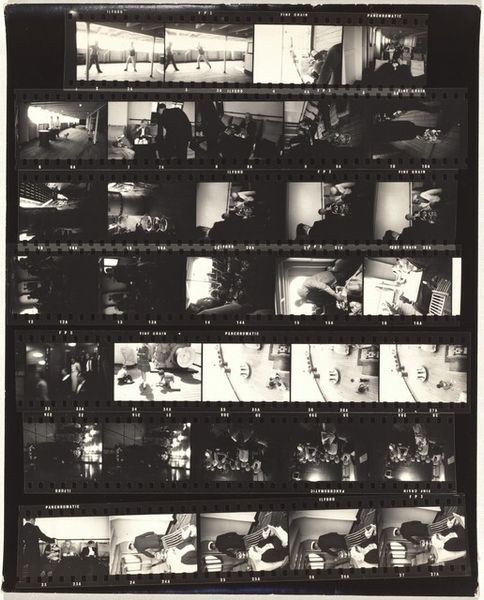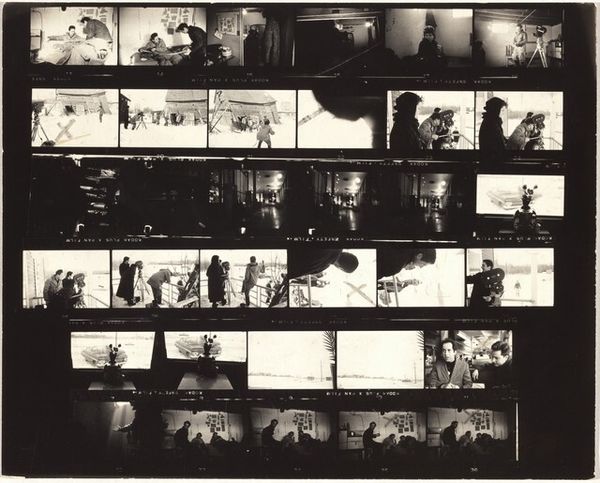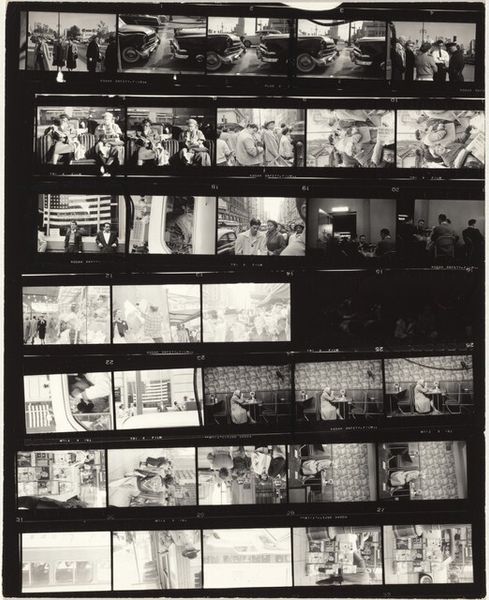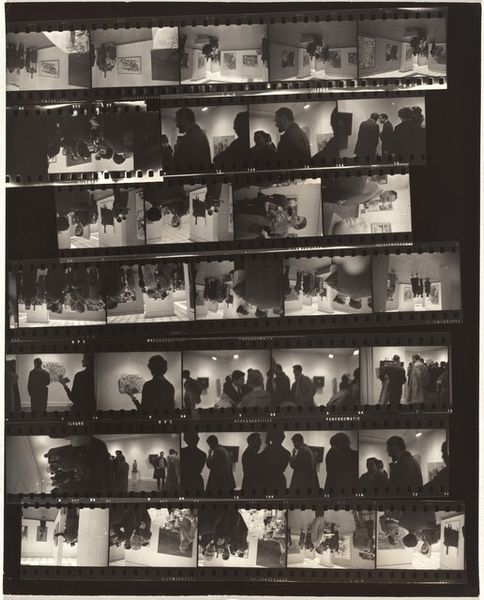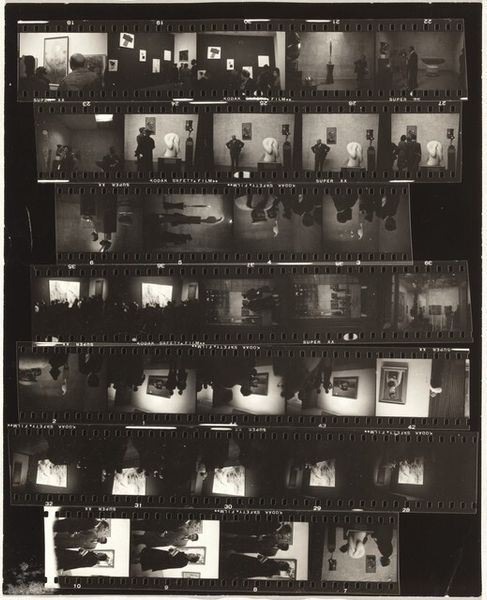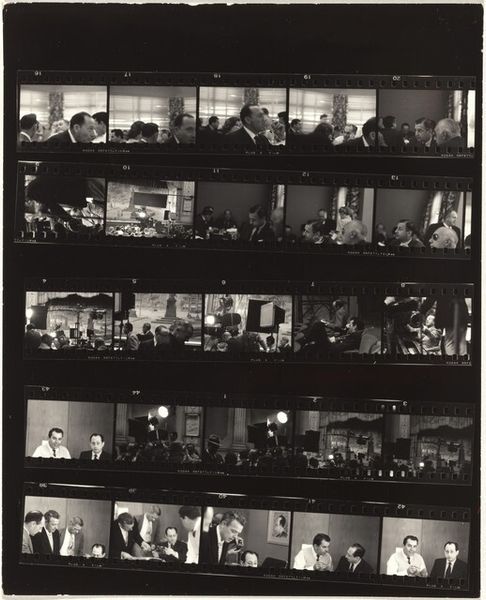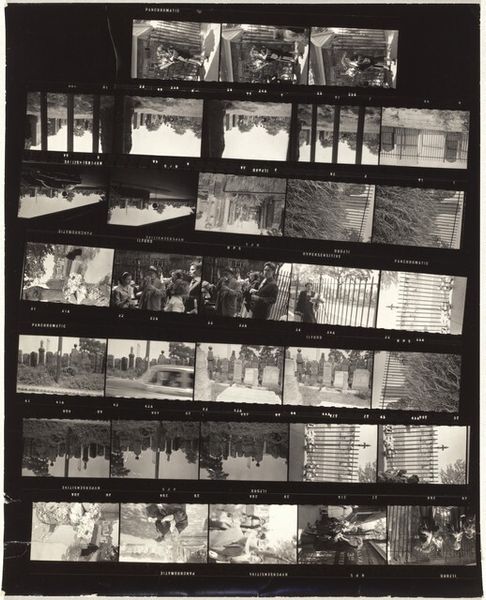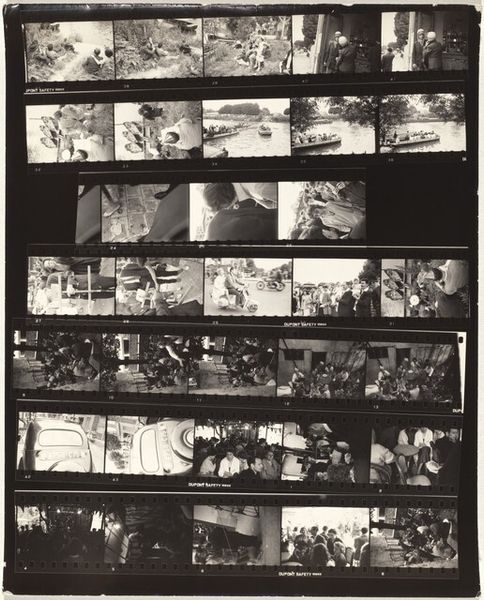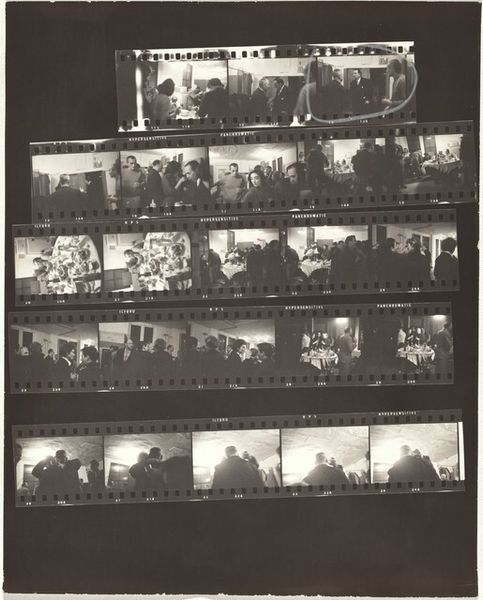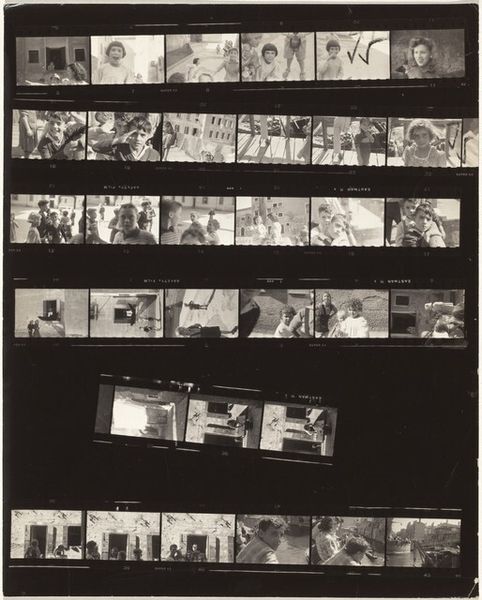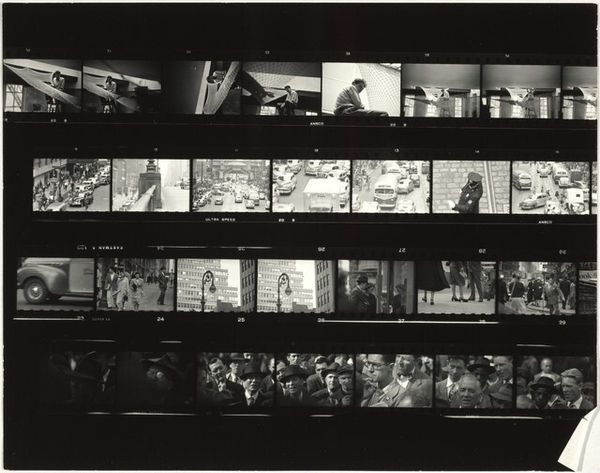
photography, gelatin-silver-print
#
portrait
#
street-photography
#
photography
#
gelatin-silver-print
#
monochrome photography
#
ashcan-school
#
monochrome
#
modernism
#
realism
#
monochrome
Dimensions: overall: 25.4 x 20.4 cm (10 x 8 1/16 in.)
Copyright: National Gallery of Art: CC0 1.0
Curator: Before us, we have "Guggenheim 353--Houston, Texas," a gelatin silver print taken by Robert Frank in 1955. It's a fascinating contact sheet offering glimpses into a bygone era. Editor: My initial impression is one of contained observation. The numerous rectangular frames feel like looking into a series of small, separate worlds, each populated by serious, formally dressed people. There's a quiet uniformity. Curator: It’s part of Frank’s pivotal work, "The Americans." The entire project was funded by a Guggenheim Fellowship. But there is so much more going on here than mere observation; Frank documented a society grappling with the dissonance between its proclaimed ideals and lived realities, right in the middle of segregation and the Cold War. He wasn’t objective, he was participating in and examining his position. Editor: I see so many men in suits, reading newspapers, attending events; it brings up cultural symbols that feel almost intentionally detached. There's a sense of American ambition contained, each man holding their symbols within those film borders like pieces in a time capsule. Curator: Precisely! Frank captured what it felt like to move through that society at that moment, marked by conformity and also alienation, especially when contextualized within the period. I cannot ignore his choices—the high contrast, grain, the framing; these aren't mistakes, but intentional ruptures in a visual language. Editor: The way those small windows offer fragmented narrative strands! Is Frank deliberately challenging established cultural icons or inviting reflection about what truly constituted them? There’s a contrast in emotional tension. Is he creating a sense of disillusionment? Curator: Yes, by resisting traditional photographic techniques and compositions he could disrupt established views about photography, American life, race and equality in 1950’s America. His gaze reveals tensions that demand further dialogue around marginalization. Editor: Yes, he prompts me to contemplate not just the subject matter but my position in understanding his choices, asking what elements are visible that trigger emotional and narrative cues about the era, in order to generate our current, continued discourse. Curator: Absolutely, considering this photograph reminds me of the ever-relevant issues it evokes, it can continue acting as a tool of conversation. Editor: Looking closely, this work's sustained power lies in its encouragement for self-reflection; this piece creates discourse through image, yes, but about ourselves also.
Comments
No comments
Be the first to comment and join the conversation on the ultimate creative platform.

